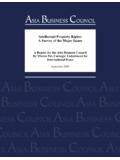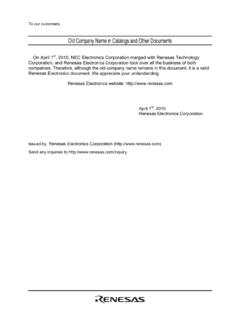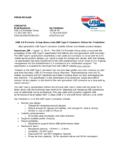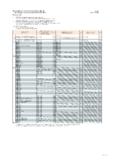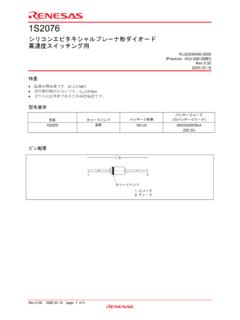Transcription of Building Resilience in Businesses and Supply Chains …
1 Building Resilience in Businesses and Supply Chains in Asia February 2018. Building Resilience in Businesses and Supply Chains in Asia By Janet Pau, Jill Baker, Nina Houston, and Mark L. Clifford EXECUTIVE SUMMARY. T. yphoons, terrorism, the threat of war, tsunamis, earthquakes, and epidemic disease. These are but a few of the challenges Asian companies have confronted since the century began. The 2015 explosion at the Chinese port of Tianjin (pictured on the cover) illustrated how the scale of man-made accidents has increased in step with economic growth. Risk is not new. What's new is that ever-more-complex business models make companies vulnerable to risk as never before.
2 What's new, too, is that we are running up against resource limits especially with water and carbon that put even simple business models at risk. For their own corporate survival, companies need to assess risk and build in Resilience both in terms of understanding their exposure to climate change and, at a more granular level, its impact on their Supply Chains . For the long-term health of the planet, this de-risking should be part of the global effort to move toward a low-carbon world. This brie ng provides the tools for starting this process of min- imizing risk and increasing Resilience , looking at short-, medium- and long-term opportunities and challenges.
3 It also considers how to reconcile short-term corporate needs with long-term planetary challenges, showing that de-risking and increasing efficiency often lead to cost savings. Asia's success in export-oriented manufacturing has powered extraordinary economic growth in the past half-century. For good reason, East Asia is known as the workshop of the world. This manufactur- ing excellence has relied on increasingly complex and attenuated Supply Chains . These Supply Chains are inherently vulnerable to disruption. Even stand-alone companies face challenges in an uncertain world. Heightened worries about geopolitical risk in the region and Asia's unique vulnerability to cli- mate change means that Building Resilience to disaster risk is a signi cant and in some cases existen- tial business issue for virtually every Asia-based company.
4 The Asia Business Council's 2017 annual survey found that members are much more concerned about external uncertainties now than in previous years, especially unpredictable risks that disrupt business operations. This brie ng explores the vulnerability of Asian Supply Chains to unpredictable risks that include natural disasters (which now are compounded by climate change), potential water and energy shortages, and geopolitical uncertainty. Climate change is one of the key factors raising business risk in Asia. Mark Carney, the Governor of the Bank of England and Chairman of the Financial Stability Board (FSB), calls the threat of climate change the tragedy of the horizon, because the timeframe is beyond the time horizon of most man- agement teams' tenure.
5 He warned that policy responses to climate change, or the lack thereof, along with technological changes, will greatly affect the core infrastructure of countries and long-run earn- ings potential of companies. Companies need to both build Resilience into their current operations and keep in mind the need for the world to effectively decarbonize by mid-century. A good Resilience strat- egy can achieve both the short-term goal of protecting operations and pro tability while working with governments and others toward the long-term global goal of limiting the impact of climate change. Geopolitical risks are difficult to predict; natural disasters such as earthquakes are somewhat ran- dom.
6 But there is a strong scienti c consensus that the atmosphere is warming as a result of human activity, and that Asia will feel these effects disproportionately. Asia is particularly at risk because of the increasing number of severe storms, the number of people in poverty, and because so many of its people and companies are near water and subject to sea water rise and oods. Climate change is also exacerbating the spread of infectious diseases, another risk which best-practice companies are, to the extent possible, preparing for. High-pro le failures to prepare for and respond appropriately to disasters, such as Fukushima opera- tor Tokyo Electric Power Co.
7 (TEPCO)'s failure to heed experts' warnings about the vulnerability of the nuclear plants to tsunami risk, and the subsequent lack of internal and external communication after the disaster, highlight all too clearly the importance of being This brie ng reviews a range of measures companies have taken to prepare for and respond to disaster risks in the short-term, as well as how they plan to improve Resilience over the medium- and long-term. In the short-term, it is imperative that a company have robust plans for business continuity and disaster recovery. Medium-term actions include better understanding and managing suppliers, increasing resource efficiency, and systematically developing strategic foresight to plan for and analyze the potential impact of uncertain events.
8 WHY ASIA MATTERS IN GLOBAL Supply Chains . Asia's success in manufacturing makes it home to about half of the global total industry When there is a Supply -chain disruption in Asia, be it with Apple iPhones or Toyota automobiles, the effects are often felt worldwide. In recent years, Asia's Supply Chains have been evolving rapidly in re- sponse to several major trends, making them even more vulnerable to external shocks. The rst is a sig- ni cant shift of production and sourcing activities from China to lower-cost Association of Southeast Asian Nations (ASEAN) countries, bolstered by the 2010 China-ASEAN Free Trade Area agreement, which gradually eliminated import tariffs on most products.
9 That has brought in many new companies, stretching out and fragmenting Supply Chains that were already attenuated. The second is increasing consumer demand in Asia due to growing disposable incomes and rapid urbanization, which shift man- ufacturing Supply Chains to serve domestic and regional Supply Chains in Asia range from the compact efficiency of China's Pearl River Delta (PRD), home to the largest electronics industry cluster in the world, to geographically extended Supply Chains in less-developed parts of China and beyond. Hon Hai Precision Industry Co. (Foxconn), the Taiwanese maker and exporter of electronics components best-known for assembling Apple iPhones, has expand- ed inland from Shenzhen to Chengdu and Wuhan and has plans for a signi cant investment in the American state of Wisconsin.
10 In the electronics industry, the share of exports considered intra-Asian trade has risen from 53% in 2001 to 64% in 2016. Many of these exports are parts and components shipped within Asia before being assembled into a nal This development bene ts the economies of ASEAN nations, including Singapore, Thailand, Vietnam, Malaysia, and Indonesia, where production has moved in response to rising labor costs in China and But the bene t of cheaper wages often comes at the cost of reduced Supply chain visibility (de ned as the ability to track parts, components, or products from the manufacturer to their nal des- Asia Business Council Building Resilience in Businesses and Supply Chains in Asia | 2.)

